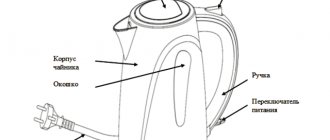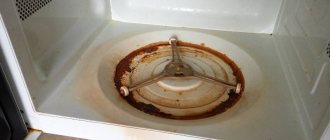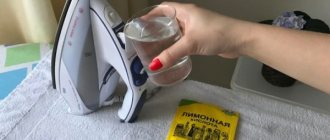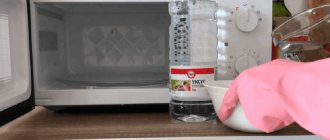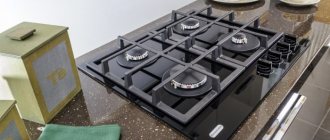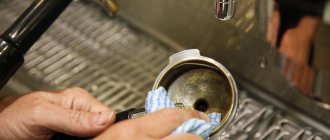Why is rust harmful?
The appearance of such a formation is impossible not to feel - the water acquires a very unpleasant aftertaste. At the same time, other problems appear.
- If the kettle is electric, rust deposited on the spiral prevents normal heating of the water. The time allotted for this increases significantly (along with the consumption of gas and electricity).
- Water with rust elements enters our body, which is fraught with the appearance of serious diseases.
- Working equipment is thrown away only because of the appearance of rust, which can be easily removed.
- Finally, rust can simply corrode the metal and completely ruin the dishes.
And since the problem can be calmly dealt with, then all that remains is to figure out how to do it.
The appearance of rust in the kettle
The population who has access to high-quality water in all respects is incredibly lucky. Many people have to use hard water with a high content of various mineral salts and trace elements for drinking and cooking. If there is a lot of iron in the water, a coating of rust will certainly form on the walls of the pots and in the kettle.
Why should you delete
Just a few boils of water are enough for this rusty deposit to form on the inner wall of the kettle. In addition to the unpleasant appearance inside, there are other reasons why you need to clean the rust:
- A specific taste appears that does not allow you to enjoy the aroma of freshly brewed tea or coffee.
- In electrical appliances, deposits on the heating coil interfere with heating. The boiling time increases by an order of magnitude.
- Many housewives throw away a working kettle only because of brown rust inside.
Features of cleaning an electric kettle
In an electric kettle, rust forms on the metal heating element. It is recommended to remove rye deposits with food acids. If parts are severely damaged, you can use a special chemical.
Use of citric acid
The procedure consists of the following simple manipulations.
- The device reservoir is filled with water to the maximum allowable volume.
- Pour the package of citric acid powder into the kettle. The ingredient is available in sachets weighing 10-15 grams.
- Turn on the device. After boiling the lemon solution, you should wait 10 to 20 minutes and re-boil the contents.
- Pour out the contents, let the device cool and wipe the inside with a sponge and rinse.
- Take water, boil and drain.
To clean a device that is slightly contaminated with rust, you can use fresh lemon instead of acid in a powdered consistency. The principle is the same: the electric kettle is filled with water, and a lemon cut into slices is placed inside. Lemon water is boiled and cooled several times, then wiped and rinsed. For ease of cleaning, the sponge can be replaced with a toothbrush.
Cleaning with vinegar and soda
The chemical reaction of baking soda with vinegar produces carbon dioxide, which destroys rust deposits. This option is suitable for glass and metal teapots. The cleaning procedure is carried out in the following order.
- Fill the device a little more than halfway with water. Add 6-9% vinegar to the remaining volume of the tank.
- Pour 1 tablespoon of baking soda into the solution and wait for the chemical reaction to complete.
- Turn on the device. After the kettle boils, wait until it cools down.
- Drain the solution and rinse. Wipe the remaining brown traces of rye inside the electric kettle with a sponge or toothbrush dipped in a vinegar solution.
To remove the smell of vinegar, you should rinse the kettle several times.
Cleaning liquid “Kumkumit” Bagi
It is not always possible to clean the device using food acids and alkalis. The special household chemical product “Kumkumit” Bagi successfully copes with rust and limescale deposits inside the electric kettle. The cleaning liquid is recommended for cleaning metal and plastic devices. The chemical formula of the product includes citric acid and other drugs. Liquid release form: 0.35 liter bottles. The price on the market is within 150-250 rubles.
Two step-by-step options for the procedure are acceptable.
- Apply 50-100 ml of cleaning agent evenly over the inner surface of the kettle using a sponge. Take a 5-minute pause.
- Fill the tank with 0.5 liters of water and boil.
- Drain the solution. Rinse the kettle. Take clean water, boil and drain.
Or
- Fill the device 3/4 full with water and bring to a boil.
- Pour 100 ml of cleanser into the kettle.
- Pause for about 20 minutes.
- Drain the solution and rinse thoroughly with clean water.
How to descale a kettle with soda?
Soda is suitable for enamel and electric kettles. It is an affordable, but at the same time universal remedy, very effective in the fight against limescale deposits on the walls of teapots.
However, you need to be careful with it, since hard grains can damage the surfaces by scratching them.
Most likely, you will have to repeat cleaning the kettle with soda. Since it is a fairly mild product, one application for a heavily damaged surface will not be enough.
You need to fill the kettle halfway with water and pour two teaspoons of soda into it. Let the water boil, then, reducing the flame, boil for 25-35 minutes. Drain the water and rinse the inside of the kettle.
If the kettle is electric with an auto-shut-off mode, then simply after the appliance has finished boiling, leave the water and soda in it until it cools completely.
Features of cleaning an enamel kettle
The enameled surface is cleaned of rusty deposits using soda, a solution of table vinegar or household chemicals.
Using vinegar solution
The method consists of the following step-by-step manipulations.
- In the evening, boil about 3/4 of the water in the kettle.
- Fill the remaining container with 9% vinegar. For greater effectiveness, you can add a tablespoon of regular salt to the solution.
- Leave the teapot with the vinegar solution overnight.
- Drain the liquid and rinse the kettle thoroughly.
- If there are any remaining rust stains, scrub the surface with a brush.
- Rinse the kettle thoroughly.
To get rid of the vinegar smell, boil clean water in the appliance and drain.
Using Baking Soda
Soda is gentler than acid and does a good job of cleaning enamel surfaces damaged by cracks and chips. This method is also suitable for cleaning aluminum kettles. The algorithm of actions is as follows.
- Prepare a soda solution based on the proportion of 1 tbsp/0.5 l.
- Pour the prepared liquid into the apparatus and boil.
- Pause and boil again.
- Drain the liquid, wipe the surface with a soft sponge and rinse thoroughly.
The amount of soda solution poured into the kettle depends on its capacity. It is important that the walls affected by rust are completely covered with the solution.
To avoid damaging the enamel, it is not recommended to apply soda to the walls with a sponge or brush.
Anti-rust liquid Cillit Bang
The range of household chemicals from the Cillit brand includes a large number of products. To clean the insides of the kettle from rusty deposits, it is recommended to choose a specialized product from the Cillit brand against plaque and rust. This product is a liquid packaged in plastic bottles with a capacity of 0.55 liters. The cost of one bottle is approximately 170 rubles. Suitable for removing rust from intact enamel surfaces (without chips or cracks).
The cleaning fluid is acid-based, so make sure to protect your hands with rubber gloves. Moisten a sponge with a few drops of the product and smear the inside of the kettle. Pause for no more than 5 minutes. Rinse thoroughly to remove the product. Wipe dry.
Cillit Bang for plaque and rust removal should not be used on aluminum or damaged enamel surfaces.
How to descale a kettle with vinegar?
Another remedy that helps descale a kettle at home is vinegar.
To do this, water is poured into the device in the same volume as in the previous method, and vinegar is added at the rate of half a glass of vinegar per 1 liter of water. If you don’t have vinegar, then vinegar essence will do.
In this case, its amount should be reduced (take 3 teaspoons of essence per liter of water). Boil the water for 3-5 minutes, let it cool completely, drain and rinse the kettle with water. Repeat boiling only with clean liquid at least twice.
If the old plaque does not go away the first time, the process can be repeated. Also, softened plaque can be removed by rubbing it with a sponge.
However, vinegar cannot be used to clean electric kettles.
Other rust removal methods
You can also remove rusty deposits using non-standard solutions. It will be interesting to learn about some unique ways in which utensils are cleaned.
- Washing powder is poured onto a damp surface and left to act for 20 minutes. Now half a potato enters the battle and is thoroughly rubbed into this area. All that remains is to rinse the device, but this must be done with special diligence.
- The popular drink Coca-Cola can also help eliminate the threat of corrosion. You need to pour it into the kettle and leave it overnight. In the morning, the device is wiped with a sponge and soap and washed with water. If the inner coating of the kettle is white, then it is better to use a drink like Sprite or 7-UP - they have a minimal amount of dyes.
- Is there any brine left over from cucumbers or tomatoes? Feel free to pour it into the kettle. The whole secret is in the required consistency of citric acid and vinegar used for canning. The recipe is simple: add brine, pour it into the dishes, bring to a boil, cool, drain. Of course, an unpleasant specific odor will remain, which can be removed by thoroughly washing the dishes.
- Sour milk will also come in handy. It is enough to fill the kettle to one third of its volume with the drink, bring to a boil and leave for a short time to react.
- Another popular method is to use peelings from potatoes, pears and apples. It is usually used for an enamel or steel teapot - the contents are placed in a bowl, boiled and left for several hours. Afterwards, you need to drain the contents and boil again with clean water. This procedure is enough to completely wash out all the bad contents.
What you should and shouldn't do
There are a lot of recipes, but not all of them are considered truly effective. For example, folk remedies will help only at the initial stage of formation, and in serious cases they will only affect scale, not rust. Do not use mechanical cleaning agents such as steel wool or sandpaper. Any scraping will damage the inner coating, but will not bring the desired result.
There is no benefit in using aggressive compounds based on sulfuric and hydrochloric acid. Firstly, this will definitely damage the internal coating, and secondly, it will leave an aftertaste that is harmful to health. It is very important to ensure good rinsing, and you will have to drain the boiled water after this at least a couple of times.
Preventive measures
It is better not to look for ways to remove rust, but from the moment of purchase to think about preventing its occurrence. To do this, it is enough to follow simple rules.
- Boil only filtered water. The distilled version is also suitable.
- Do not leave liquid in the kettle after preparing a hot drink. It is important to leave the device dry, because any remaining liquid will produce calcium.
- Rinse the kettle after each use.
- Carry out preventative cleaning of kettles every month. This will save effort on fighting rust and the budget for purchasing a new device.
Thus, you can easily and affordably remove rust that has appeared in the equipment. But it’s better not to bring it to this state.
The effect of rust on the human body
Rust is a combination of iron and oxygen. Both elements are beneficial for the human body separately. After all, with a lack of iron in the blood, anemia occurs, which manifests itself as inhibition of vital processes in the body. But the oxidation of iron inside the teapot leads to the fact that harmful substances get inside a person when he drinks tea. Lingering in the body, iron oxides or salts irritate the gastric mucosa. Rust causes skin rashes, allergic reactions, and hormonal imbalances. It is dangerous for people with kidney failure to drink such water. Particles of rusty sediment cover the walls of the kettle, rendering the dishes unusable.


